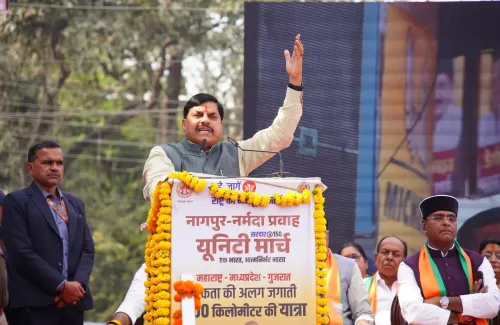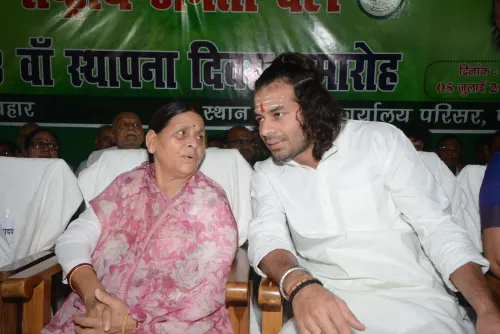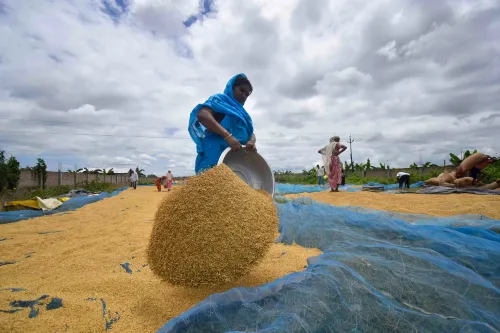Is 81 Percent of Rural Households Really Receiving BIS Standard Tap Water?

Synopsis
Key Takeaways
- 81% of rural households have tap water access.
- Jal Jeevan Mission emphasizes water quality.
- BIS:10500 standards guide water supply quality.
- Rural water quality monitoring is enhanced through a handbook.
- Public can report issues via CPGRAMS.
New Delhi, Aug 18 (NationPress) Reinforcing the commitment to the BIS water quality standards, Minister of State for Jal Shakti, V. Somanna, stated on Monday that out of 19.36 crore rural households, over 15.68 crore, which constitutes 81 percent, have access to a tap water supply.
In a written statement to the Rajya Sabha, Somanna indicated that as of August 14, approximately 12.45 crore additional rural households have been granted tap water connections, as reported by various States and Union Territories.
He elaborated that since August 2019, the Central government has been executing the Jal Jeevan Mission (JJM) – Har Ghar Jal in collaboration with the States, emphasizing the quality of water supply.
At the launch of JJM, only 3.23 crore (17 percent) of rural households had access to tap water connections, he noted.
Under the JJM, the Bureau of Indian Standards' BIS:10500 guidelines are utilized as a standard for the quality of water distributed through piped water supply schemes, according to Somanna.
“The BIS specifies the ‘acceptable limit’ and ‘permissible limit in the absence of an alternative source’ for various physico-chemical and bacteriological parameters concerning drinking water quality,” he added.
In collaboration with different stakeholders, the “Concise Handbook for Monitoring Water Quality of Piped Drinking Water Supply to Rural Households” was released in December 2024 to assist States and UTs.
This handbook advises comprehensive testing of drinking water samples at multiple points, including the source, treatment facility, storage, and distribution locations, implementing necessary remedial actions to ensure the quality of water supplied to households.
Recommended remedial measures include cleaning overhead tanks in case of contamination, he specified.
Citizens are encouraged to file complaints or grievances through the Centralised Public Grievance Redress and Monitoring System (CPGRAMS) at pgportal.gov.in, the department’s website at jalshakti-ddws.gov.in, and other physical avenues.
A ‘Citizen Corner’ has also been established on the JJM Dashboard, featuring village-level water quality test results made publicly accessible to enhance awareness and trust among citizens regarding the quality of piped water supplies in rural regions.









